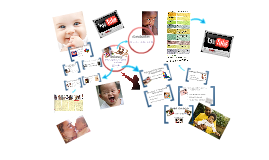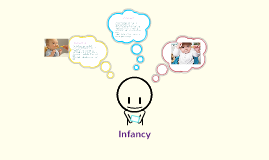Infancy
Transcript: Beginning with birth, it is the steady progression of verbal cognition, developing the ability to process information and communication with the environment by the means of a spoken language first vocalizations related to actual words "ba" "da" "ga" "here" overextension: one word that can have numerous meanings the ability to use words verbally Holophrastic Speech 6 months cooing becomes more defined (vowel sounds) laughing Nurture- vocal noises that express an infant's excitement and happiness "oohs" and "ahs" 8 months "doggy" can imply any animal "baba" can mean 'my bottle' 3 months babbling- expressive vocabulary- Reinforcement: birth The inborn tendency to learn grammer Universal, genetic prewired ability to construct sentences according to the rules of grammer (Boeree, 2003) (cc) photo by jimmyharris on Flickr (Hubpages, 2012) Language production (Rathus, 2012) (Rathus, 2012) "more" 5 months (Rathus, 2012) Reference List Eoeree, C. G. (2003). Language Development. Retrieved from http://webspace.ship.edu/cgboer/langdev.html Hubpages. (2012). Babies: Language and Cognitive Development. Retrieved from http://stormybrain.hubpages.com/hub/Language-and-cognitive-development Jimutal (2007 March 31). Larken Baby's First Wrods Baby Babbling Babble Talk. Retrieved from http://www.youtube.com/watch?v=bPGekZreJLc National Institute of Health. (2011). Speech and Language Developmental Milestones. Retrieved from http://nidcd.nih.gov/health/voice/pages/speechandlanguage.aspx Rathus, A. Spencer. (2012). HDEV. Wadsworth, CA: Cengage Learning Stihlguy (2006 November 12). Baby Cooing. Retrieved from http://www.youtube.com/watch?v=YI1aPCdJa (National Institute, 2011) Growth of Sentences 12 months Nature- Parents or older people serve as the "role model" for infants through the process of observation and imitation (Hubpages, 2012) (Rathus, 2012) "mine" Telegraphic Speech (cc) photo by Metro Centric on Flickr What is Language Development? (Hubpages, 2012) (Rathus, 2012) Language comprehenstion Psycholinguistic Theory (Hubpages, 2012) A parent's reaction to their child's babbling can cause an increase in that behavior Reinforcing accuracy in the child's understanding of their surroundings Stages of Development Language Development In Infancy "gimme ball" (Rathus, 2012) receptive vocabulary- (National Institute, 2011) vocabulary of at least 50 words clear communication efforts two word sentences "see doggy" "all done" Wernicke's area: (cc) photo by Metro Centric on Flickr (Rathus, 2012) Imitation: smiles cooing begins realization of voice recognition and voice pitch single-syllable babbling with alternating consonant sounds learning the concept of 'conversation' the understanding of words spoken by others development according to genetic codes Two word sentences to express ideas and emotions; usually occuring between 18 to 24 months "mommy sock" (National Institute, 2011) (Rathus, 2012) Nature vs. Nurture speech-like babbling occurs "gaga" "dada" "baba" "mama" utterances signaling emphasis and emotion increased growth in vocabulary understand more than 80 words when spoken to (Boeree, 2003) sounds are imitated from others sounds of play gurgling, blowing bubbles "more cookie" the first word is spoken ability to comprehend numerous words nonverbal communications nodding and pointing Infancy: Single words to express complete thoughts and understandings 10 months (cc) photo by Franco Folini on Flickr "no bed" development influenced by environmental influences crying reflexes such as Rooting, Moro, and Babinski (Rathus, 2012) Areas in the brain allow us to process information we see and hear. Then translate it into a vocalized standard that can be understood by our outward environment Broca's area: 4 months (Rathus, 2011) (Boeree, 2003) responds more definitely to changes in tone understanding patterns such as bottle feedings and naps (Boeree, 2003) "you" Noam Chomsky, 1988 24 months 18 months cooing- underextension: a general word used for a specific item

















